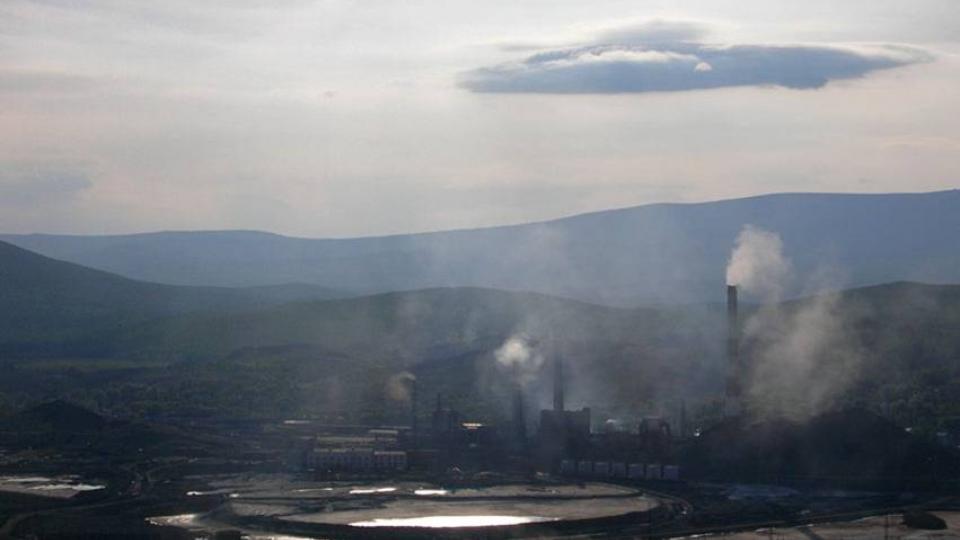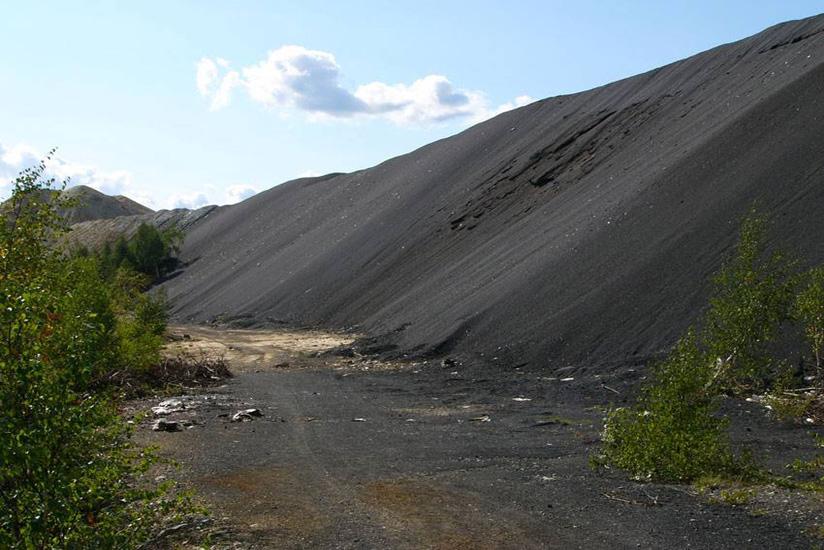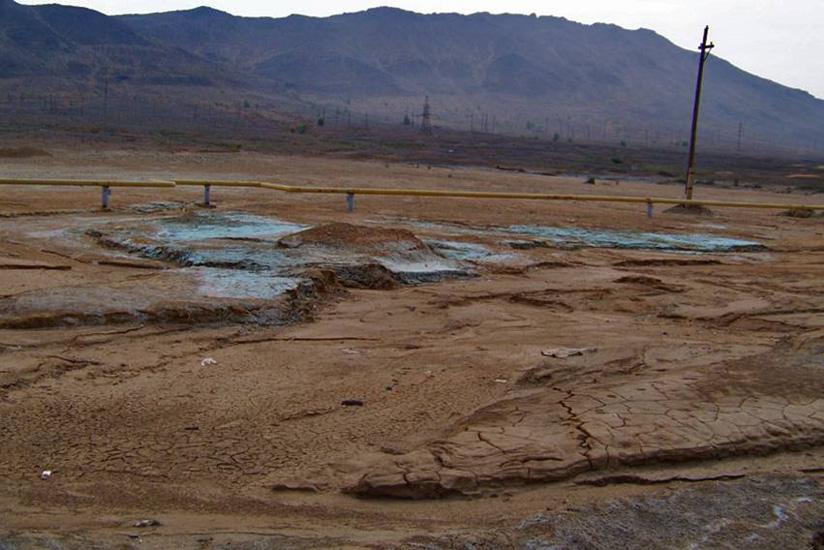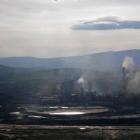Karabash is one of the largest copper-smelting centers in Russia. The city of Karabash was founded as a mining settlement in 1822; it was granted city status in 1928. Open-pit copper extraction has been conducted there since 1837. There are also two abrasive manufacturing plants which process the copper slag for blast cleaning.

Plant at Karabash
Plant at Karabash
2010 Anna Semenenko
 This work is licensed under a Creative Commons Attribution-NonCommercial-ShareAlike 3.0 Unported License.
This work is licensed under a Creative Commons Attribution-NonCommercial-ShareAlike 3.0 Unported License.
After a century and a half of copper extraction, plant life in the city has practically died out and the ecosystem of the surrounding area has been destroyed. The city and its outskirts have been subject to acid rain since the 1970s; the copper-smelting process produces sulfuric gases, and no purification of emissions was undertaken. A critical worsening of the ecological situation forced the Karabashmed copper plant to stop work from 1989 to 1998. In 1996, Karabash and its surrounding area were declared an ecological disaster zone by order of the Ministry of Natural Resources and Environment.
However, the Karabashmed plant—which provided employment to the majority of the local population—resumed operation in 1998 with no modernization of the treatment facilities. In 2004, a temperature regulation malfunction in one of the furnaces resulted in a colossal sulfuric gas emission. This gas was brought down out of the atmosphere with the next rainfall, producing an acid strong enough to scorch all the green spaces and plant life in the area surrounding the city.

Pollution at Karabash
Pollution at Karabash
2010 Anna Semenenko
 This work is licensed under a Creative Commons Attribution-NonCommercial-ShareAlike 3.0 Unported License.
This work is licensed under a Creative Commons Attribution-NonCommercial-ShareAlike 3.0 Unported License.

Polluted and abandoned area at Karabash
Polluted and abandoned area at Karabash
2010 Anna Semenenko
 This work is licensed under a Creative Commons Attribution-NonCommercial-ShareAlike 3.0 Unported License.
This work is licensed under a Creative Commons Attribution-NonCommercial-ShareAlike 3.0 Unported License.
Despite continuing pollution, Russia’s Ministry of Natural Resources and Environment decided to exclude Karabash from the list of most-polluted cities in 2009. Moreover, the Urals division of Rostekhnadzor (the Federal Service for Ecological, Technological and Nuclear Supervision) raised the permitted emissions limits for the Karabashmed plants. No concrete actions were taken to stop the contamination of the region until July 2010, when the Prosecutor General’s Office of the Russian Federation in the Ural Federal District legally obliged Karabashmed to modernize its production and reduce harmful emissions; as a result, the ecological situation is slowly improving.
How to cite
Semenenko, Anna. “Karabash: The City of Pollution.” Environment & Society Portal, Arcadia (2013), no. 14. Rachel Carson Center for Environment and Society. https://doi.org/10.5282/rcc/5551.
ISSN 2199-3408
Environment & Society Portal, Arcadia
 This work is licensed under a Creative Commons Attribution-NonCommercial-ShareAlike 3.0 Unported License.
This work is licensed under a Creative Commons Attribution-NonCommercial-ShareAlike 3.0 Unported License.
2013 Anna Semenenko
This refers only to the text and does not include any image rights.
Please click on the images to view their individual rights status.
- Kozlov, Mikhail, Elena Zvereva, and Vitali Zverev. Impacts of Point Polluters on Terrestrial Biota: Comparative Analysis of Eighteen Contaminated Areas. London: Springer, 2009.
- Williamson, B. J., V. Udachin, O. W. Purvis, B. Spiro, G. Cressey, and G. C. Jones. “Characterisation of Airborne Particulate Pollution in the Cu Smelter and Former Mining Town of Karabash, South Ural Mountains of Russia.” Environmental Monitoring and Assessment 98, no. 1–3 (2004): 235–59.








